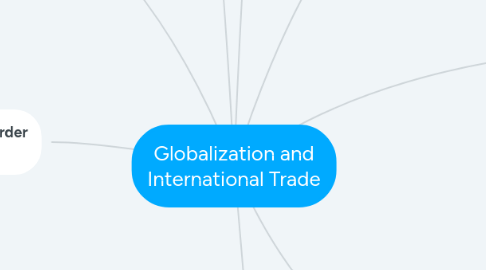Globalization and International Trade
by Li Karo


1. century XIX and XX
1.1. railways and steamboats
1.2. telegram
1.3. New industrial production methods
2. European Space: cross-border trade
2.1. 1913: 8% worldwide pic ext.
2.2. World War 1: World Trade Reduction
2.3. Colonial blocks:
2.4. 2 World War II: 1950: Export 5% PIC planet Deglobalization"
2.4.1. Post War; Resurgence (23 national agreements GATT customs tariffs)
2.4.2. Protectionism
2.4.3. Free trade creation (OE Community - NAFTA)
2.4.4. Liberation western world developed
3. 80s and 90s
3.1. China and India; Liberation
3.2. 1955 OMC 159 Members
3.3. World trade increase to 1980
3.4. Electronic commerce: - shipping costs
3.5. Production Productivity Frontiers
3.6. Opportunity cost
3.7. Comparative Advantage: + workers (cost of opportunity = compensated)
4. External Scale Economies
4.1. Music = K-POP
4.2. Specialized employees job search
4.3. Putting the labor market in common
4.4. Production improvements
4.5. Specialization in siertos products
4.6. Average cost reduction + efficiency
5. Multinationals: Production in different countries
5.1. Offshoring
5.2. Outsourcing
5.3. Multiplex factories production
5.4. Redistribution of resources
5.5. Economic opening
6. Immigrants
6.1. Native Jobs
6.2. 2010: Particular use of labor fallacy
6.3. Series of works for any case
6.4. Working population
6.5. Consequences
6.5.1. Flow from low to high wage countries
6.6. Qualified workers
6.6.1. Higher payments
7. Intensive Capital Goods Intensive Work Hands
7.1. = factors and prices
7.2. Shipping costs: OUTPUTS
7.3. Tegnology: Wages + ALTOS
7.4. Japanese food prices
7.4.1. Winner beats the loser
7.5. Caildeo
7.5.1. Public media
7.6. protectionist policies
7.6.1. Inequality Western World
7.6.2. Technological
8. Scale Economies
8.1. Exporar Low Cost of opportunity
8.2. They do not exchange different types of the same good
8.3. Intra-industrial trade
8.4. Average production cost - As production increases
8.5. Differentiated products: Sierto control (price fixing)
8.6. Monopoly
8.6.1. Less companies less compete = higher prices
8.6.2. - #FIRMAS> EQUILIBRIUM
8.7. Market Integration:
8.7.1. Competition intensity
8.7.2. Largest Market
8.7.2.1. Greater companies + economy of a country > Variety of products Economy consume more of all
